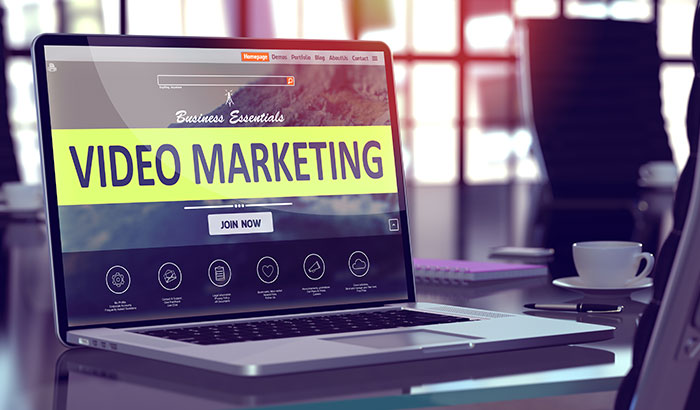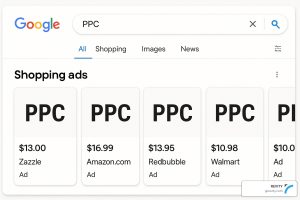In today’s digital age, image and video marketing have become essential to a company’s marketing strategy. Companies constantly seek the most effective ways to connect with their audience, boost engagement, and increase conversions.
Solid images and video content are two of the most popular marketing mediums companies use to achieve their objectives. Whether showcasing their products, telling brand stories, or explaining complex concepts, solid images and video content can leave a lasting impact on the audience.
This blog will explore the advantages of using solid images and video content in marketing and provide examples of companies that have successfully utilized both mediums. Additionally, we will discuss the platforms where both mediums can thrive and offer some factors to consider when deciding between solid images and video content.
By the end of this blog, you will better understand how to leverage solid images and video content to create a compelling marketing campaign that will resonate with your audience.
Advantages of Solid Images
Regarding solid images, there are several key advantages to consider. First, solid images offer versatility and compatibility across multiple platforms. Solid images can be easily integrated and displayed consistently across all these channels, whether your audience is accessing your content on a desktop, mobile device, or social media platform.
One significant advantage of solid images is their quick loading time. Unlike video content, solid images require less bandwidth, allowing your audience to access your content faster. This improves user experience and ensures that your website or blog loads quickly, reducing the risk of visitors leaving due to slow loading times.
In addition to their quick loading time, solid images are relatively easy to produce and are cost-effective. For individuals or businesses on a budget, solid images offer an accessible option. You can create your own images using design tools or access a wide range of stock photo libraries offering high-quality visuals at affordable prices.
Overall, the advantages of solid images – their versatility, compatibility, quick loading time, and affordability – make them an excellent choice for visual content in your blog or digital marketing efforts.
Advantages of Video Content
Video content offers several advantages, making it a powerful digital marketing tool.
One significant advantage of video content is its ability to enhance engagement with your audience. Videos have a unique ability to capture attention and communicate messages in a captivating and dynamic manner.
With motion, visuals, and audio, videos can evoke emotions, entertain, and grab the viewer’s interest, resulting in higher engagement than static images or text-based content.
In addition to engagement, video content provides excellent storytelling capabilities. You can effectively convey narratives, showcase products or services, and connect with your audience more personally through videos. Combining visuals, audio, and storytelling techniques can create a powerful impact, leaving a lasting impression on viewers and increasing brand awareness and loyalty.
Another key advantage of video content is its ability to convey complex information effectively. Some concepts or ideas may be challenging to explain with words alone, but videos can simplify and clarify complex information through visual illustrations, animations, and step-by-step demonstrations.
This can be particularly useful in industries like technology, healthcare, or education, where demonstrating concepts visually enhances understanding and retention.
Video content also has notable benefits in terms of SEO and conversion rates. Search engines prioritize video content, making it more likely to appear in search results and increasing the chances of driving organic traffic to your website.
Videos have been shown to increase conversion rates, as they can effectively convey product features, benefits, and customer testimonials, boosting customer confidence and driving them towards making a purchase or taking desired actions.
Impact of Solid Images on User Experience
Solid images play a significant role in shaping the user experience by enhancing aesthetics and visual appeal. Aesthetically pleasing visuals can grab attention, intrigue users, and create a positive first impression of your brand or website. Solid images can add color, style, and personality to your content, making it visually engaging and memorable.
Solid images also contribute to brand identity. Using consistent visual elements across your marketing materials reinforces your brand’s personality, values, and overall image. Solid images help create a cohesive and recognizable brand identity that resonates with your target audience and fosters a sense of familiarity and trust.
To captivate and retain audience attention with solid images, consider the following strategies:
- High-quality visuals: Use high-resolution clear, sharp, and visually appealing images. Blurry or low-quality images can negatively impact the overall user experience.
- Relevant and context-specific images: Choose solid images relevant to your content and convey the intended message. They should complement the text and provide additional visual context to enhance understanding.
- Emotionally appealing images: Select images that evoke emotions or connect with your audience emotionally. Emotional resonance can create a stronger bond between your brand or message and the user.
- Consistency in style and branding: Establish a consistent visual style across your solid images to maintain brand cohesiveness. This includes color palette, typography, and overall design aesthetic.
- Strategic placement: Position solid images strategically within your content to guide the user’s flow. Use images to break up the text, highlight key points, or draw attention to calls to action.
- Accessibility considerations: Ensure your solid images are accessible to all users, including those with visual impairments. Use alt text and provide captions or descriptions to ensure the content is accessible and inclusive.
By applying these strategies, you can leverage solid images to create an aesthetically pleasing user experience, strengthen your brand identity, and effectively capture and retain audience attention.
Impact of Video Content on User Experience
Video content can profoundly impact the user experience by leveraging the power of motion and audio to capture audience interest, using storytelling techniques to create emotional connections, and incorporating interactive elements to increase engagement.
Firstly, combining motion and audio in video content can significantly enhance audience engagement and interest. Videos can convey information and emotions in a way that static images or text-based content simply cannot. By including dynamic visuals and sound effects, videos can create a captivating and immersive experience that draws viewers in and holds their attention.
Secondly, video content can use storytelling techniques to connect emotionally with viewers. Engaging stories evoke emotions like empathy, excitement, or wonder, creating a more powerful impact than straightforward information.
By weaving stories around products, services, or company values, videos can create a deeper connection with the viewer, increasing the likelihood of brand loyalty and customer retention.
Lastly, incorporating interactive elements into video content can increase engagement and keep viewers interested. Interactive features such as polls, quizzes, or clickable links can create an immersive experience and allow viewers to interact with the content actively. This can increase the time spent by users on the site, improve brand awareness, and drive more significant conversion rates.
Choosing Between Solid Images vs. Video Content
When deciding between solid images and video content, there are several factors to consider, including the purpose and goal of the content, the target audience preferences, and the overall marketing strategy and available resources. Let’s take a closer look.
- Purpose and Goal of the Content:
Consider the purpose and goal of the content you want to create. Video content may be more suitable to showcase a product or service with visual details, demonstrations, or step-by-step instructions.
On the other hand, if your goal is to create static visuals that can be easily shared or incorporated into various marketing materials, solid images could be a better choice. - Target Audience Preferences:
Understanding your target audience’s preferences is crucial in deciding between solid images and video content. Some audiences prefer quick and easily digestible information, making solid images a more effective option.
Others may engage more with video content, as it provides a dynamic and interactive experience. Consider the preferences of your target audience and choose the medium that aligns with their preferences and offers the best chances of engagement. - Overall Marketing Strategy:
Consider your overall marketing strategy and how solid images or video content fit into it. Assess factors such as the platforms and channels you use, the type of content that performs well on those platforms, and the overall brand image you want to project.
If your strategy involves extensive video marketing or your brand is known for its video content, prioritizing video content may align better with your overall marketing goals. Solid images may be preferred if your strategy focuses on static visuals that can be shared across different channels. - Available Resources:
Finally, consider the resources available to create and produce the content. Video production requires more time, equipment, and technical expertise than solid images.
Creating solid images may be more feasible if you have limited resources or time constraints. Assess your available resources and determine which option aligns better with your capabilities.

Examples of Success With Images
Countless companies have effectively used solid images in their marketing to establish their brand voice, tell a story, evoke emotions, and engage their audience. Here are a few examples of brands that have utilized solid images effectively in their marketing efforts:
- Apple:
Apple is renowned for its sleek, modern, and minimalist design aesthetic, consistently reflected throughout its marketing materials. They frequently use solid images to showcase their products, highlight innovative designs, and display their premium quality. Solid images add to the sophisticated and elegant image that Apple has cultivated over the years. - Airbnb:
Airbnb often utilizes solid images to create a sense of wanderlust and travel adventure. Their images convey a sense of exploration, wonder, and excitement, reinforcing their brand message of enabling people to explore the world and connect. Their solid images are often vivid and brightly colored, emphasizing their fun and adventurous identity. - Nike:
Nike uses solid images effectively in its advertising campaigns to inspire and motivate viewers. Their images showcase athletes pushing past their physical limitations, capturing the power and strength that their brand represents. Nike’s images often incorporate bold typography and dynamic visuals, conveying a sense of urgency and action. - Coca-Cola:
Coca-Cola’s solid images are often warm and nostalgic and evoke strong emotions associated with sharing time with loved ones. Their images often feature people enjoying Coke products in happy settings, generating a feeling of warmth, connection, and happiness. This approach helps them create long-lasting relationships with their audience. - Dropbox:
Dropbox has utilized solid images in its marketing materials to help showcase the simplicity and ease of its virtual sharing product. Their solid images typically feature vibrant colors, unique patterns, and a clean design aesthetic, adding to the user-friendly and intuitive image they are trying to establish. - National Geographic:
National Geographic, a renowned media brand, has a long history of utilizing powerful images to tell incredible stories.
With its compelling photography of wildlife, nature, and cultural events, National Geographic captures readers’ attention and transports them to different parts of the world. By sharing awe-inspiring images, they establish themselves as a trusted authority in exploration and education. - Starbucks:
Starbucks uses visually appealing images in its marketing to showcase its products and create a sense of coziness and indulgence. Through their social media platforms, they share high-quality images of their signature beverages, seasonal specials, and cozy coffee shop vibes. Starbucks’ use of enticing images helps to create a desire and emotional connection with its brand. - Glossier:
Glossier, a beauty and skincare brand, has built a strong online presence by using relatable and authentic imagery in its marketing campaigns.
They feature real customers and emphasize the natural beauty in their visuals, resonating with their target audience. Glossier’s carefully curated images create a sense of community and authenticity, inviting consumers to be a part of the brand.
Examples of Success With Video Content
At the same time, many companies have successfully harnessed the power of video content in their marketing efforts to connect with their audience, tell compelling stories, and increase engagement. Here are some examples of brands that have effectively used video content in their marketing:
- GoPro:
GoPro has built its entire brand around user-generated video content. They showcase exhilarating adventures, extreme sports, and stunning landscapes captured by their customers using GoPro cameras. These videos demonstrate their products’ capabilities, evoke a sense of adventure, and inspire viewers to get out and explore. - Dove:
Dove has used video content in its “Real Beauty” campaign to challenge conventional beauty standards and promote self-acceptance. Their videos often feature real women discussing their insecurities and promoting body positivity. These videos have garnered widespread attention, sparked conversations, and established Dove as a brand that values inclusivity and self-confidence. - Blendtec:
Blendtec’s “Will It Blend?” series is a viral marketing campaign showcasing its blenders’ power and durability. These videos blend unusual items like smartphones, golf balls, and even an iPhone, which garnered millions of views and created a buzz on social media. The videos effectively demonstrate the strength and performance of Blendtec blenders in a fun and engaging way. - Old Spice:
Old Spice’s “The Man Your Man Could Smell Like” campaign was a huge success, primarily driven by their creative and humorous video commercials. These videos featured a charismatic spokesperson engaging the audience with quick and entertaining storytelling. The campaign revitalized the brand, appealed to a younger demographic, and increased brand awareness. - Red Bull:
Red Bull is known for its high-energy and adrenaline-packed video content. They produce and sponsor videos showcasing extreme sports, daring stunts, and world-record performances. By associating their brand with thrilling and extraordinary experiences, Red Bull has cultivated a strong brand identity and attracted a loyal audience. - GEICO:
The insurance company GEICO has been known for its humorous and attention-grabbing TV advertisements. They have also successfully created viral videos for their social media platforms. Their clever approach and relatable scenarios create a memorable and effective marketing campaign. - Slack:
Slack is a tech company that provides business communication tools. They have used video to creatively and engagingly showcase their product’s benefits.
They created a video series called “So Yeah, We Tried Slack…” that shows a group of coworkers struggling to communicate effectively through email before transitioning to Slack and seeing an improvement. The videos highlight the ease of use and impact on productivity while using Slack. - Tesco:
Tesco, a British multinational retailer, uniquely used video to promote their food. They created a series of short stop-motion videos showcasing their products used to create a recipe.
The videos are fun and pleasing to watch, featuring quick and easy recipes. By showing their products in use, they could connect with their audience and encourage purchases while promoting their brand image of fresh and healthy food.
These are just a few examples of companies that have effectively used video content in their marketing. By creating compelling, shareable, and engaging videos, these brands have captured attention, made emotional connections, and, ultimately, achieved their marketing objectives.
As you can see, both mediums have unique strengths and applications. The choice between solid images and video content ultimately depends on your content goals, audience preferences, available resources, and brand identity.
Companies can make informed decisions and leverage the appropriate medium to achieve marketing objectives by carefully analyzing these factors.
Upgrade Your Marketing With REVITY
Are you ready to take your image or video marketing efforts to the next level with captivating solid images and engaging video content? Look no further than Revity! We are a full-service marketing agency committed to helping businesses thrive digitally.
Whether you need stunning solid images that speak volumes about your brand or compelling video content that captivates your audience, our team of experts is here to deliver exceptional results.
Visit our website today to learn more about our services and how we can tailor a marketing strategy to meet your needs. Don’t settle for the ordinary – partner with Revity and make a lasting impression through your marketing efforts. Call us at 801.877.3362, or fill out the form on our website to schedule an appointment with us.
































